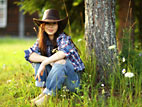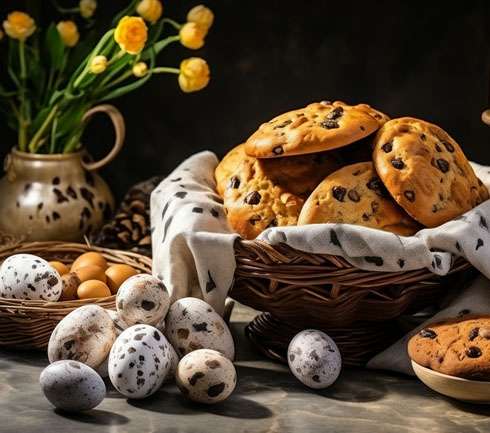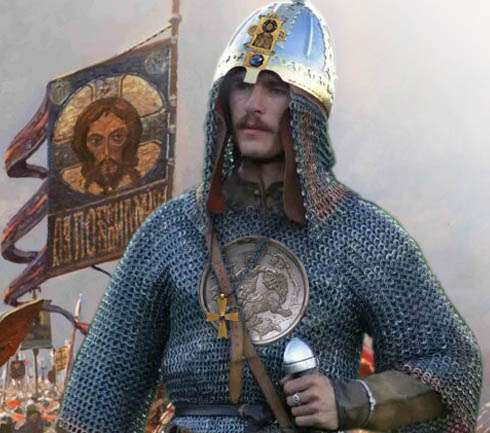It’s Tuesday, April 15, 2025 and 70°F in Austin, Texas
The Mystery of the Romanov Treasures
new exhibition may have some answers
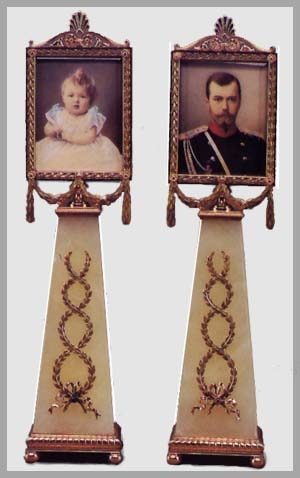
There was an article in the New York Times Antiques section about a new exhibition opening at the Virginia Museum of Art. The exhibition has been organized by Geza von Habsburg, one of the recognized experts in Faberge. It's Called "Fauxberge," von Habsburg has identified a large number of pieces in the museum that have been labelled as Faberge, but are not. The museum has a large collection of Russian pieces donated by Lillian Thomas Pratt in 1947. Many of these belonged to the murdered last Tsar of Russia, Nicholas II and his wife Alexandra and are highlights of the museum. People travel from all over the world to see them. This collection contains high profile items of Imperial patronage — like the famous Romanov Easter eggs — and other items of an extraordinary personal nature that came from the rooms of the Romanovs in the Alexander Palace of Tsarskoe Selo.
Left: Two Faberge miniature stands belonging to the Empress Alexandra. These are from the Mauve Room and are now in the Virginia Museum of Art. They show Nicholas II and their first child, Olga.
In the exhibition, which opens July 9th, von Habsburg has revealed that a large number of hardstone flowers in the collection — although marked Faberge - are most likely not retailed by the famous St. Petersburg jeweler. I say retailed because many of the hardstone pieces sold by Faberge were not actually made by him. Faberge ordered many of them from other workshops that specialized in this work. These workshops were in Russia and outside the country in places like Germany. Many of the famous hardstone animals in the collection of the British Royal family were designed and craved entirely outside of Russia. When animals or flowers were delivered to Faberge the firm often did final work to them, adding to fin details, finishes and setting diamonds and other precious stones into eyes and the centers of flowers. Once they were completed these hardstone pieces where placed in custom-made hard hollywood boxes lined with white silk and stamped in gold with the Russian Imperial crest and the name of the firm.
There has been a long debate about how to identify pieces that belonged to Nicholas, Alexandra and their children versus items that were retailed through the store. Some items have inventory marks and others do not, it has been claimed that items with Faberge inventory marks are not items of Imperial commission, which were unmarked. Hardstone animals and flowers — especially animals — are often difficult to mark because of their small size and lack of space in hidden places to put a mark. These marks are scratched into the surface while metal works are stamped.
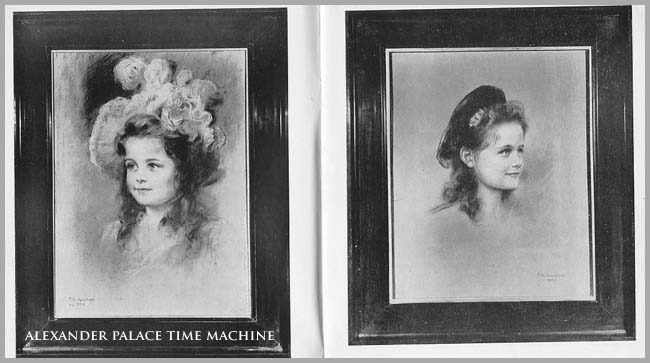 Above: two pastels of the Grand Duchesses Marie (right) and Anastasia (left) by Kaulbach. These portraits were displayed in the Maple Room of the Alexander Palace. They went with the family to Yekaterinburg, and were sold by A La Vieille Russie in New York in the 30's. No one knows their fate since.
Above: two pastels of the Grand Duchesses Marie (right) and Anastasia (left) by Kaulbach. These portraits were displayed in the Maple Room of the Alexander Palace. They went with the family to Yekaterinburg, and were sold by A La Vieille Russie in New York in the 30's. No one knows their fate since.
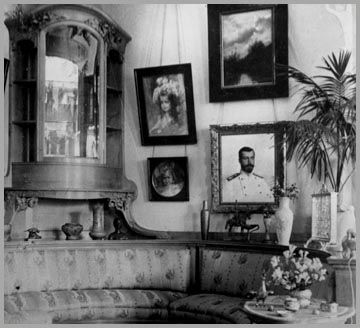 The Imperial family purchased Faberge items in three ways. The famous Imperial Easter Eggs where part of an annual commission, Nicholas automatically received two eggs each year, one to be presented to his mother, the Dowager Empress Marie and another for his wife Alexandra. The minister of the Imperial Court and his staff gave input on general themes for the eggs that Faberge turned into designs and then final works of art. The production time varied based on the complexity of the design.
The Imperial family purchased Faberge items in three ways. The famous Imperial Easter Eggs where part of an annual commission, Nicholas automatically received two eggs each year, one to be presented to his mother, the Dowager Empress Marie and another for his wife Alexandra. The minister of the Imperial Court and his staff gave input on general themes for the eggs that Faberge turned into designs and then final works of art. The production time varied based on the complexity of the design.
Left: The Corner Cabinet of the Maple Room in the Alexander Palace. This cabinet was where the Empress displayed many of her Faberge Eggs. To the right of the cabinet you can see the missing pastel of Anastasia shown above.
The eggs were presented by Faberge at the palace the Romanovs were living in at the time. Sometimes he would travel to the Crimea to deliver them. One of his big concerns was to try and find out if Alexandra or Marie liked the egg they received that year. That was not an easy task. You can imagine how important it was for Faberge to get feedback — praise to bring back to the workshops or bad news if the work was coldly or indifferently accepted.
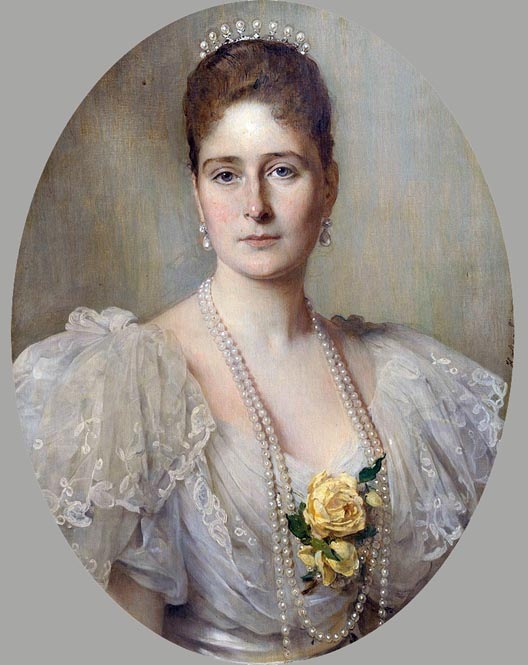
Above: Portrait of the Empress Alexandra Feodorovna.
So which eggs did Alexandra like and which didn't she like. Of course we can see eggs like Kremlin Cathedral and Imperial Train egg in historical pictures of the palace. There they are in the rooms of the Alexander Palace displayed around the rooms. The Empress liked the Tsarevich Alexis and the Alexander Palace eggs, she also preferred the Tecentenary egg, and the Coronation Anniverary egg. Eggs she didn't like were sent to the Winter Palace (many things she didn't like went there). Some of the most ornate eggs ended up there - like the Lillies of the Valley egg (which I like very much). I think some of these were just too delicate keep around the children or they just weren''t the Empress's personal style. She didn't look at them the way we do today. They were gifts from her husband, but they were official gifts, rather than personal ones.
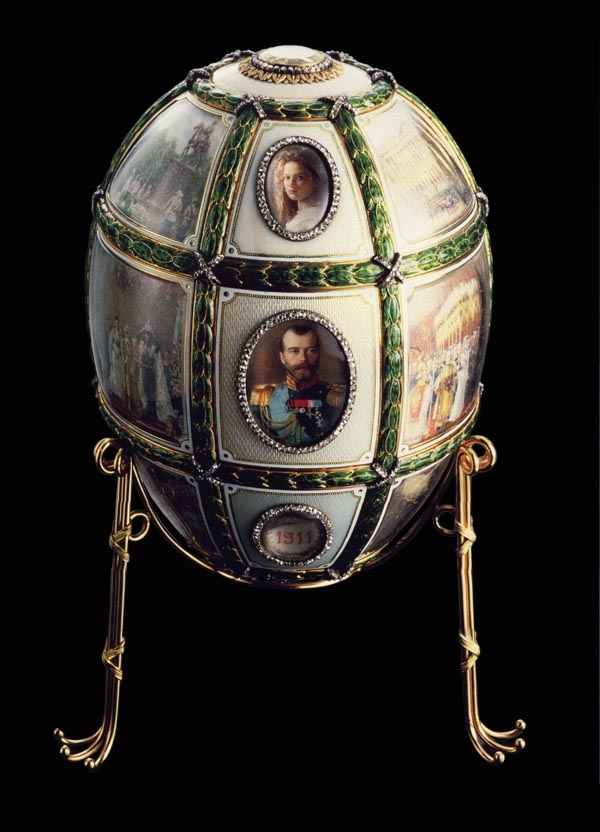 Above: Faberge egg with miniatures of the Imperial family and events associated with the Imperial Coronation in Moscow in May 1896.
Above: Faberge egg with miniatures of the Imperial family and events associated with the Imperial Coronation in Moscow in May 1896.
Faberge would bring collections of items to the palace for the family to select from. They could be items they bought for themselves or meant as gifts for each other, their extended family, friends and servants. They were frames, animals, jewelry, art objects and even items for daily used like pens. They were often in restricted price ranges that the girls could afford from their personal allowances and private accounts. They would be displayed on tables in the private rooms. Special inventory pages would be marked by the family showing which items would be purchased. Instructions were given later on where the items where to go. Some were sent on by Faberge as gifts to their designated recipients and others stayed behind in the palace.
Other Faberge items where special commissions from the Imperial family. Nicholas and Alexandra gave gifts to each other, often of jewelry on special occasions like anniversaries, births of their children and their own birthdays. Alexandra assisted in the design of special commissions, like the series of jewels made as gifts for the Tecentenary celebrating the 300th anniversary of the Romanov Dynastey in 1913,
Now, back to the exhibition at the Virginia Museum. The article mentioned a Faberge frame of Tatiana that von Hapsburg has identified as coming from the Alexander Palace and being an item that travelled to Tobolsk and Yekaterinburg with the Romanovs that returning after their murder to Moscow before it was sold to Lillian Pratt. The museum has many personal items of family like this. Any precious or semi-precious item left in the Alexander Palace after the Romanovs left in August 1917 was inventoried and removed rom the palace. There were millions of dollars in jewels, cash and gold hidden my the family in concealed places the Russians never found. The Germans discovered them all and removed them during their occupation of the palace in the Second World War.
The Romanovs took items of a personal nature with them into exile along with a huge, almost unimaginable amount of jewels and gold. As the noose tightened aroung the family in Siberia they managed to smuggle out diamond tiaras, jewelled swords, loose stones and necklaces of fantastic value out of the Governor's masion in Tolbolsk - sending them to convents, priests homes and other 'safe' hands. Their strange fate under Stalin is another story.
Anyway, many years ago I wrote about these items that went to Siberia and their fate. I published the lists of the items we knew about and items that had vanished. Many of them are still missing. Incredibly many were sold in the USA in the 20's, 30's and 40's and their current owners know nothing about their importance or origin.
There were special numbered funds of items that belonged to the Imperial family in Moscow. The animals and frames - not the jewels, which were kept separately. The animals and personal things were sold by Gokhran as lots. Pratt was lucky to get many of the most personal items that belonged to the family and you can see them there now. I hope the exhibition will point all of these out for their significance.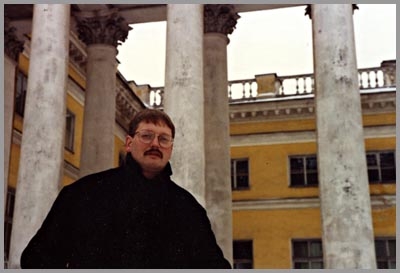 Left: That's me at the Alexander Palace some years ago.
Left: That's me at the Alexander Palace some years ago.
A few years ago a large number of the personal numbered trunks that went with the family into exile turned up in Houston, still filled with Tsarskoe Selo Imperial china and table linen, the very items used in the last meal the family had in the Ipatiev house. The trunks carried the Imperial crests and same numbers from packing records. These were the trunks that went through Vladivostok and ended up in England where they were delivered to the surviving Romanovs. The family burnt the clothes on a huge bonfire (shades of Yurovsky) to destroy them so they could not be relics. The china and other things was saved. These items were sold after the death of one of Ksenia's descendants. They were not identified and the idiot who got them in Houston didn't believe they were what they were. They were sold for nothing and have disappeared.
Well, I have rambled a lot on this subject for today. Perhaps I will write about it again some other time.
If you would like to read more about Romanov and Russian history - and to see the inventory sheets and other documents - click here to visit my Alexander Palace site.








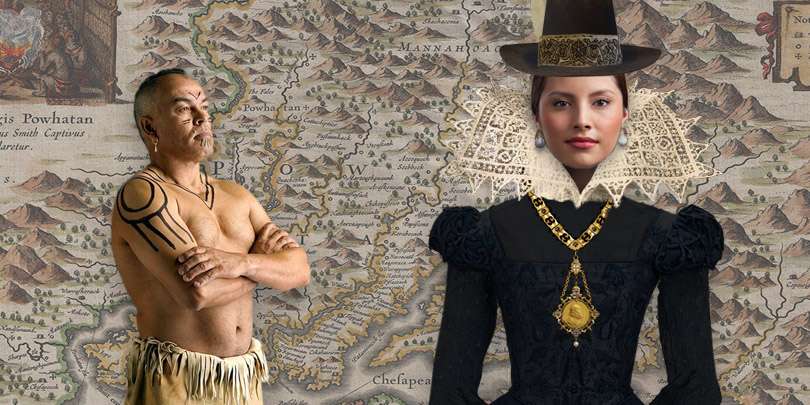






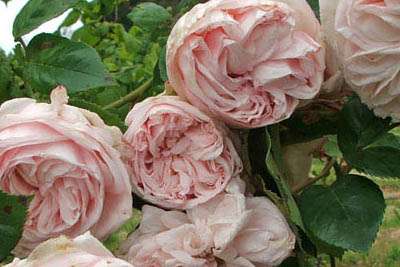
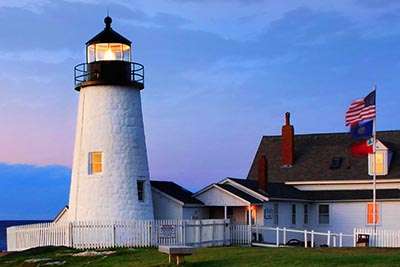
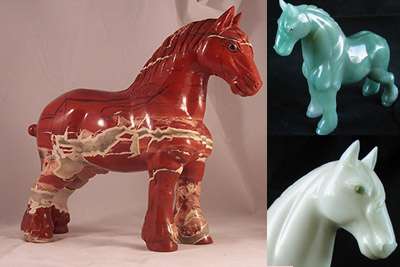



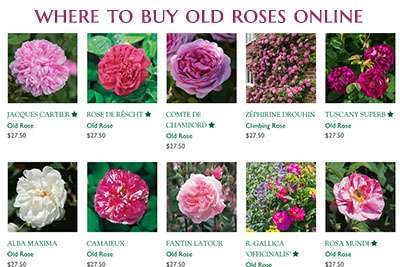





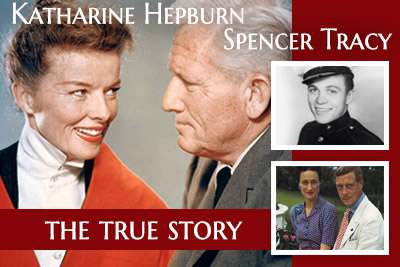
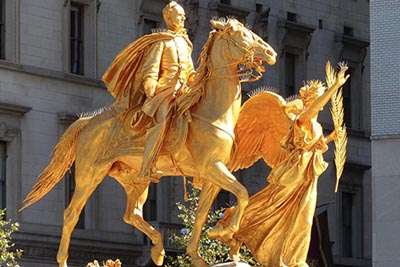
 New Home Builder Website Checklist
New Home Builder Website Checklist 

